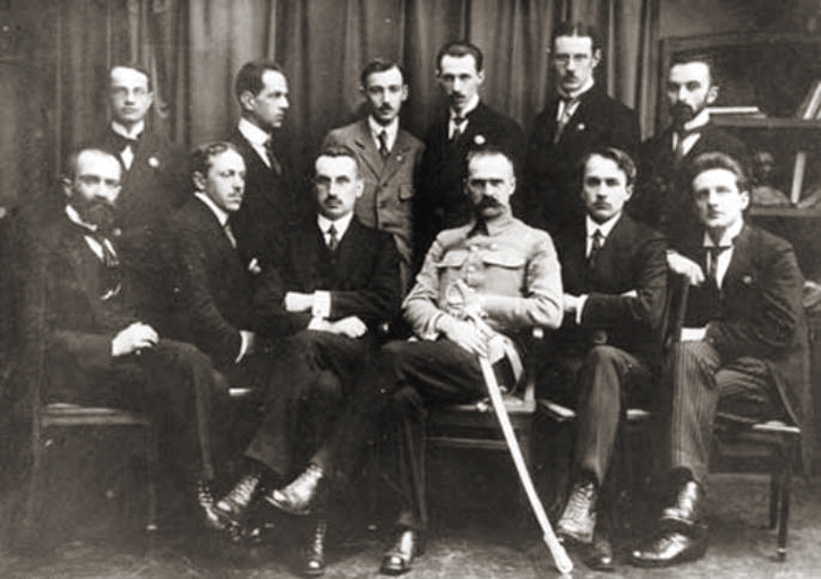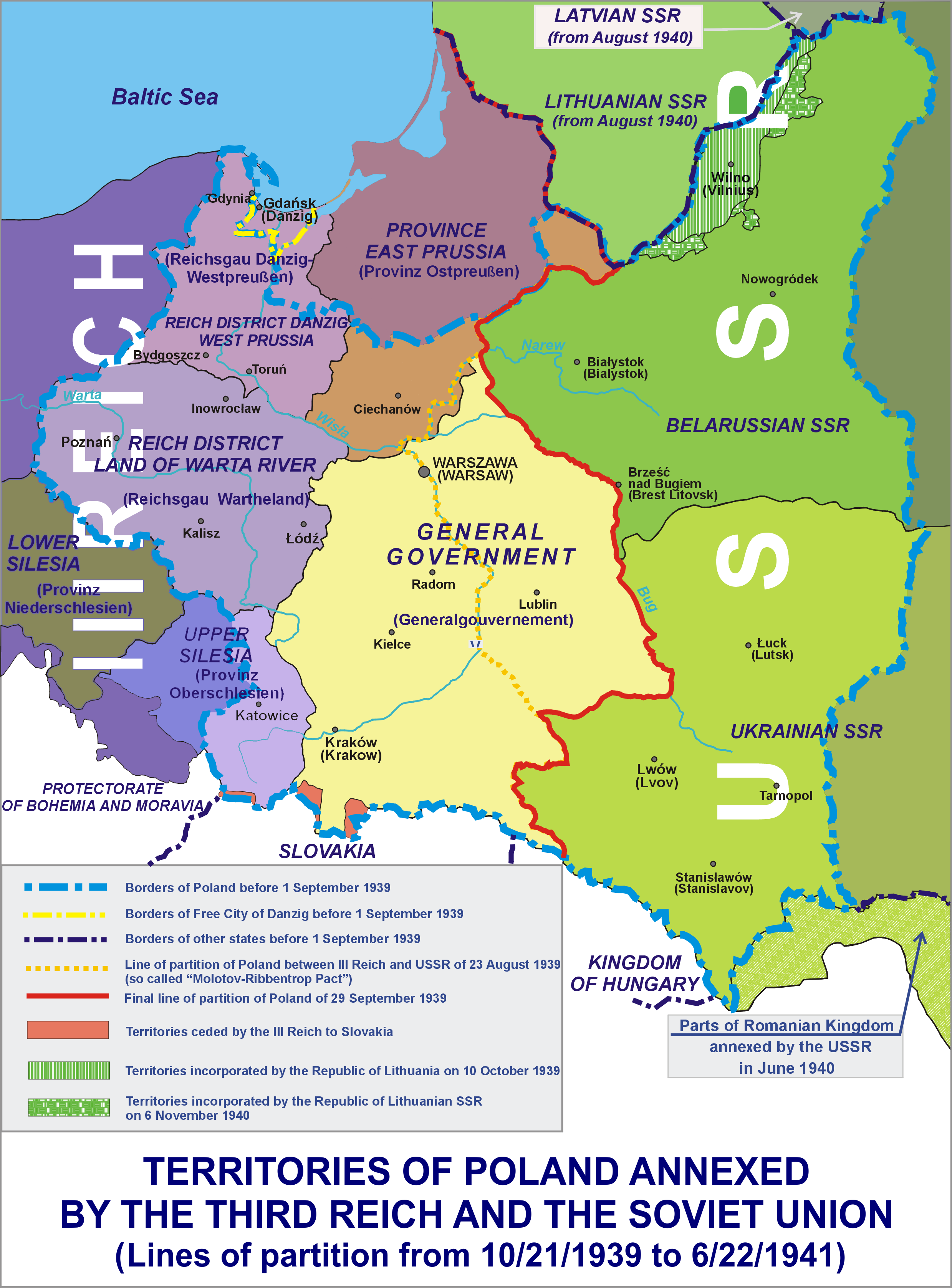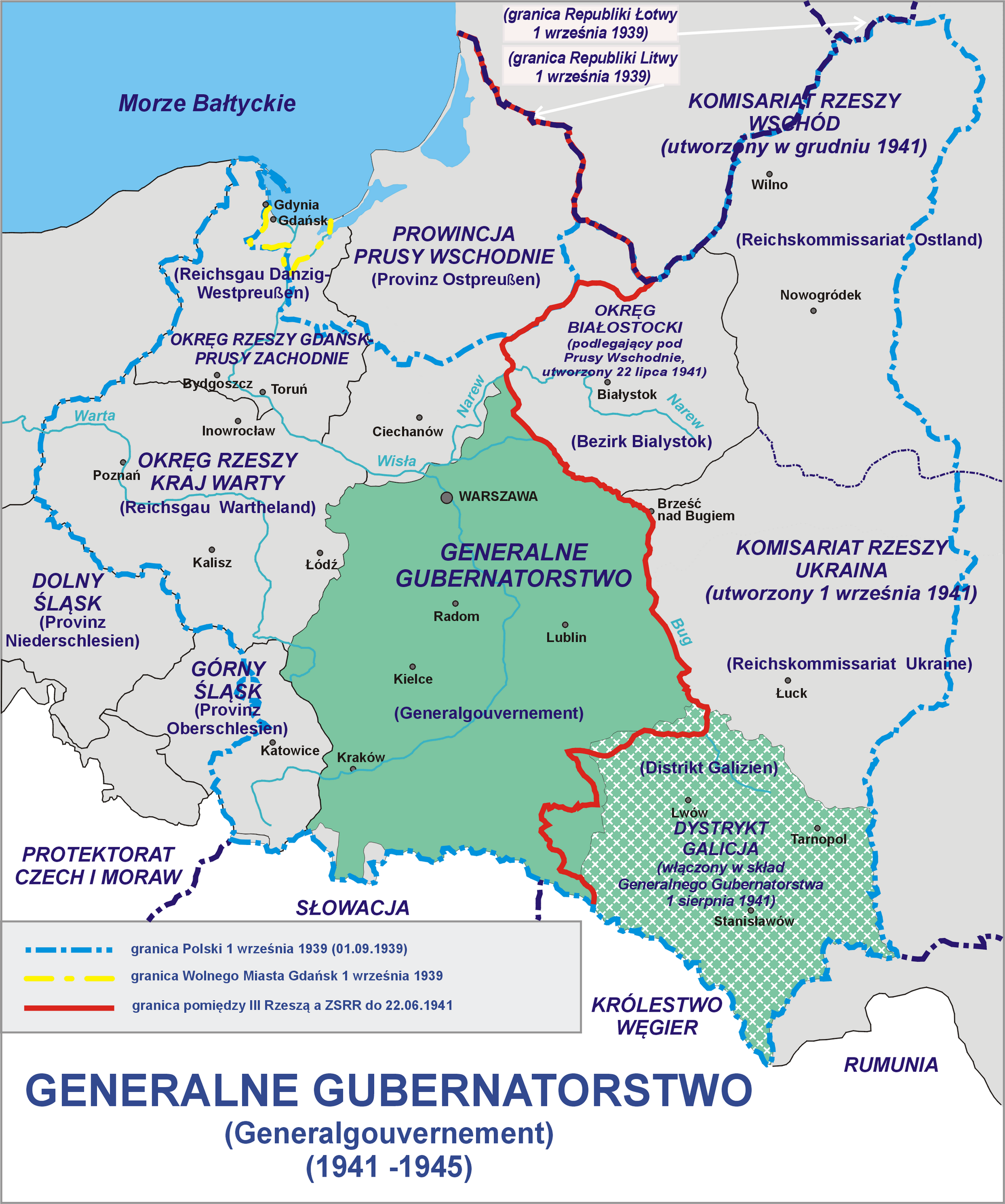|
ЕЃД…ck
ЕЃД…ck is a village in PЕ‚ock County, Masovian Voivodeship, in central Poland. It is the seat of the gmina (administrative district) called Gmina ЕЃД…ck. It lies approximately south-west of PЕ‚ock and west of Warsaw. It is located on the western shore of ЕЃД…ckie DuЕјe Lake. The landmark of ЕЃД…ck is the local palace. Various Polish films were shot in the village, including '' Satan from the Seventh Grade'', '' At Full Gallop'', '' With Fire and Sword'', as well as the 1960s TV series '' Stawka wiД™ksza niЕј Ејycie''. History In the late 19th century, there was a distillery, a brick factory and a cheese factory in ЕЃД…ck, and the village had a population of 308. According to the 1921 census, the village with the adjacent manor farm had a population of 312, entirely Polish by nationality and 99.0% Roman Catholic by confession. During the German occupation of Poland (World War II), the forest of ЕЃД…ck was the site of large massacres, in which over 200 Poles were murdered ... [...More Info...] [...Related Items...] OR: [Wikipedia] [Google] [Baidu] |
Gmina ЕЃД…ck
__NOTOC__ Gmina ЕЃД…ck is a rural gmina (administrative district) in PЕ‚ock County, Masovian Voivodeship, in east-central Poland. Its seat is the village of ЕЃД…ck, which lies approximately south-west of PЕ‚ock and west of Warsaw. The gmina covers an area of , and as of 2006 its total population is 4,932. The gmina contains part of the protected area called Gostynin-WЕ‚ocЕ‚awek Landscape Park. Villages Gmina ЕЃД…ck contains the villages and settlements of AntoninГіw, Grabina, KorzeЕ„ KrГіlewski, KorzeЕ„ RzД…dowy, KoЕ›ciuszkГіw, KoszelГіwka, ЕЃД…ck, LudwikГіw, MatyldГіw, Nowe Rumunki, Podlasie, SД™deЕ„ DuЕјy, SД™deЕ„ MaЕ‚y, WincentГіw, WЕ‚adysЕ‚awГіw, Wola ЕЃД…cka, ZaЕєdzierz, ZdwГіrz and ZofiГіwka. Neighbouring gminas Gmina ЕЃД…ck is bordered by the city of PЕ‚ock and by the gminas of GД…bin, Gostynin, Nowy DuninГіw and Szczawin KoЕ›cielny. ReferencesPolish official population figures 2006 {{DEFAULTSORT:Gmina Lack Lack Lack may refer to: Places * Lack ... [...More Info...] [...Related Items...] OR: [Wikipedia] [Google] [Baidu] |
PЕ‚ock County
__NOTOC__ PЕ‚ock County () is a unit of territorial administration and local government (powiat) in Masovian Voivodeship, east-central Poland. It came into being on January 1, 1999, as a result of the Polish local government reforms passed in 1998. Its administrative seat is the city of PЕ‚ock, although the city is not part of the county (it constitutes a separate city county). The county contains three towns: GД…bin, south of PЕ‚ock, Drobin, north-east of PЕ‚ock, and WyszogrГіd, south-east of PЕ‚ock. The county covers an area of . As of 2019, the total country population is 110,987, out of which the population of GД…bin is 4,125, that of Drobin is 2,872, that of WyszogrГіd is 2,601, and the rural population is 101,389. Neighbouring counties Apart from the city of PЕ‚ock, PЕ‚ock County is also bordered by Sierpc County to the north, PЕ‚oЕ„sk County to the east, Sochaczew County to the south-east, Gostynin County to the south-west, WЕ‚ocЕ‚awek County to the west and Lipno C ... [...More Info...] [...Related Items...] OR: [Wikipedia] [Google] [Baidu] |
PЕ‚ock
PЕ‚ock (pronounced ), officially the Ducal Capital City of PЕ‚ock, is a city in central Poland, on the Vistula river, in the Masovian Voivodeship. According to the data provided by Central Statistical Office (Poland), GUS on 31 December 2021, there were 116,962 inhabitants in the city. PЕ‚ock is a seat of the county (''powiat'') in the west of the Masovian Voivodeship. From 1079 to 1138 it was the List of former national capitals, capital of Poland. The Cathedral Hill (''WzgГіrze Tumskie''), along with PЕ‚ock Castle and the PЕ‚ock Cathedral, Catholic Cathedral containing the sarcophagi of some Polish monarchs, is listed as a List of Historic Monuments (Poland), Historic Monument of Poland. It was the main city and administrative center of Mazovia in the Middle Ages before the rise of Warsaw, and later it remained a royal city in Poland, royal city of Poland.Adolf PawiЕ„ski, ''Mazowsze'', Warszawa 1895, p. 37 (in Polish) It is the cultural, academic, scientific, administrative and ... [...More Info...] [...Related Items...] OR: [Wikipedia] [Google] [Baidu] |
Voivodeship Road
According to classes and categories of public roads in Poland, a voivodeship A voivodeship ( ) or voivodate is the area administered by a voivode (governor) in several countries of central and eastern Europe. Voivodeships have existed since medieval times and the area of extent of voivodeship resembles that of a duchy in ... road () is a category of roads one step below national roads in importance. The roads are numbered from 100 to 993. Total length of voivodeship roads in Poland is of which are unpaved (2008).Transport – activity results in 2008 , Główny Urząd Statystyczny List of voivodeship roads Current list of voivodeship road ...[...More Info...] [...Related Items...] OR: [Wikipedia] [Google] [Baidu] |
At Full Gallop
''At Full Gallop'' (, and also known as ''In Full Gallop'') is a 1996 Polish biographical tragicomedy film written and directed by Krzysztof Zanussi, starring Maja Komorowska, Bartosz Obuchowicz, Karolina Wajda, Piotr Adamczyk, Piotr Szwedes, Andrzej Szenajch, with Halina Gryglaszewska, SЕ‚awomira ЕЃoziЕ„ska, StanisЕ‚awa CeliЕ„ska, Krystyna Bigelmajer, Agnieszka Warchulska, Grzegorz WarchoЕ‚, Jan Prochyra, Stephen Kember, Eugeniusz PriwiezieЕ„cew, Lew Rywin, and Mario Di Nardo in supporting roles. Zanussi has described the film as his most autobiographical work. It was screened in the Un Certain Regard section at the 1996 Cannes Film Festival. The film was selected as the Polish entry for the Best Foreign Language Film at the 69th Academy Awards, but was not accepted as a nominee. Plot A young boy in post-World War II, Communist-dominated Poland, whose father's decision to remain in the United Kingdom after the war has made his family politically-suspect with the local Par ... [...More Info...] [...Related Items...] OR: [Wikipedia] [Google] [Baidu] |
Polish Military Organisation
The Polish Military Organisation, PMO (, POW) was a secret military organization that was formed during World War I (1914–1918). Józef Piłsudski founded the group in August 1914. It adopted the name ''POW'' in November 1914 and aimed to gather intelligence and to sabotage the enemies of the Polish people. Piłsudski used it to act independently from his cautious Austro-Hungarian supporters, and it became an important, if somewhat lesser known, counterpart to the Polish Legions. Its targets included the Russian Empire in the early phase of the war and the German Empire later. Its membership rose from a few hundred in 1914 to over 30,000 in 1918. History Intelligence and training The Polish Military Organization (PMO) can be traced to formations of August 1914 or even earlier, but it was officially founded in November 1914 as a merger of two previously existing youth para-military organisations: the Polish Rifle Squads and the Riflemen's Association. Active in the Russian-he ... [...More Info...] [...Related Items...] OR: [Wikipedia] [Google] [Baidu] |
Institute Of National Remembrance
The Institute of National Remembrance – Commission for the Prosecution of Crimes against the Polish Nation (, abbreviated IPN) is a Polish state research institute in charge of education and archives which also includes two public prosecution service components exercising investigative, prosecution and Lustration in Poland, lustration powers. The IPN was established by the Polish parliament by the Act on the Institute of National Remembrance of 18 December 1998 through reforming and expanding the earlier Main Commission for the ''Investigation'' of Crimes against the Polish Nation of 1991, which itself had replaced the General Commission for Research on Fascist Crimes, a body established in 1945 focused on investigating the crimes of the Nazi administration in Poland during World War II. In 2018, IPN's mission statement was amended by the controversial Amendment to the Act on the Institute of National Remembrance to include "protecting the reputation of the Republic of Poland ... [...More Info...] [...Related Items...] OR: [Wikipedia] [Google] [Baidu] |
Intelligenzaktion
The ''Intelligenzaktion'' (), or the Intelligentsia mass shootings, was a series of mass murders committed against the Polish people, Polish intelligentsia (teachers, priests, physicians, and other prominent members of Polish society) during the early years of the World War II, Second World War (1939–45) by Nazi Germany. The Germans conducted the operations in accordance with their plan to Germanization, Germanize the western regions of occupied Poland, before their territorial annexation to the Nazi Germany, German Reich. The mass murder operations of the ''Intelligenzaktion'' resulted in the killing of 100,000 Polish people; by way of forced disappearance, the Germans imprisoned and killed select members of Polish society, identified as enemies of the Reich before the war; they were buried in mass graves which were dug in remote places. To facilitate the depopulation of occupied Poland, the Germans Terrorism, terrorised the general populace by carrying out public, summary exe ... [...More Info...] [...Related Items...] OR: [Wikipedia] [Google] [Baidu] |
Satan From The Seventh Grade (film)
''Szatan from the Seventh Grade'' () is a 1960 Polish romance film directed by Maria Kaniewska. Based on the 1937 novel '' Satan from the Seventh Grade'' (The English edition of the book from 2024 is called ''The Twelfth Grade Devil'') by Kornel Makuszyński, it is considered a classic children's film in Poland. Cast * Pola Raksa as Wanda * Józef Skwark as Adam Cisowski * Stanisław Milski as Professor Paweł Gąsowski * Krystyna Karkowska as Gąsowska * Kazimierz Wichniarz as Gąsowski * Mieczysław Czechowicz as Painter * Janusz Kłosiński as Żegota * Aleksander Fogiel as Priest * Krzysztof Krawczyk Krzysztof January Krawczyk (; 8 September 1946 – 5 April 2021) was a Polish baritone Pop music, pop singer, guitarist and composer. He was the vocalist of a popular Polish band, Trubadurzy ("the Troubadours"), from 1963 to 1973 when he sta ... as Boy * Leonard Pietraszak as Boy References External links * 1960 films 1960s romance films Polish romance film ... [...More Info...] [...Related Items...] OR: [Wikipedia] [Google] [Baidu] |
Occupation Of Poland (1939–1945)
During World War II, Poland was occupied by Nazi Germany and the Soviet Union following the invasion in September 1939, and it was formally concluded with the defeat of Germany by the Allies in May 1945. Throughout the entire course of the occupation, the territory of Poland was divided between Nazi Germany and the Soviet Union (USSR), both of which intended to eradicate Poland's culture and subjugate its people. In the summer-autumn of 1941, the lands which were annexed by the Soviets were overrun by Germany in the course of the initially successful German attack on the USSR. After a few years of fighting, the Red Army drove the German forces out of the USSR and crossed into Poland from the rest of Central and Eastern Europe. Sociologist Tadeusz Piotrowski argues that both occupying powers were hostile to the existence of Poland's sovereignty, people, and the culture and aimed to destroy them. Before Operation Barbarossa, Germany and the Soviet Union coordinated th ... [...More Info...] [...Related Items...] OR: [Wikipedia] [Google] [Baidu] |
Roman Catholic
The Catholic Church (), also known as the Roman Catholic Church, is the largest Christian church, with 1.27 to 1.41 billion baptized Catholics worldwide as of 2025. It is among the world's oldest and largest international institutions and has played a prominent role in the history and development of Western civilization. O'Collins, p. v (preface). The church consists of 24 ''sui iuris'' (autonomous) churches, including the Latin Church and 23 Eastern Catholic Churches, which comprise almost 3,500 dioceses and eparchies around the world, each overseen by one or more bishops. The pope, who is the bishop of Rome, is the chief pastor of the church. The core beliefs of Catholicism are found in the Nicene Creed. The Catholic Church teaches that it is the one, holy, catholic and apostolic church founded by Jesus Christ in his Great Commission, that its bishops are the successors of Christ's apostles, and that the pope is the successor of Saint Peter, upo ... [...More Info...] [...Related Items...] OR: [Wikipedia] [Google] [Baidu] |
Expulsion Of Poles By Nazi Germany
The Expulsion of Poles by Nazi Germany during World War II was a massive operation consisting of the forced resettlement of over 1.7 million Polish people, Poles from the territories of Occupation of Poland (1939–1945), German-occupied Poland, with the aim of their Germanisation in Poland (1939–1945), Germanization (see ''Lebensraum'') between 1939 and 1944. The German Government had plans for the extensive Settler colonialism, colonisation of territories of occupied Poland, which were annexed directly into Nazi Germany in 1939. Eventually these plans grew bigger to include parts of the General Government. The region was to become a "purely German area" within 15–20 years, as explained by Adolf Hitler in March 1941. By that time the General Government was to be cleared of 15 million Polish nationals, and resettled by 4–5 million ethnic Germans. The operation was the culmination of the expulsion of Poles by Germany carried out since the 19th century, when Poland was Parti ... [...More Info...] [...Related Items...] OR: [Wikipedia] [Google] [Baidu] |





